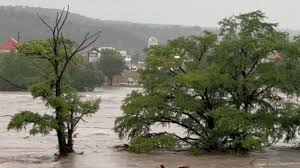Understanding Flash Flood Warnings
As severe weather continues to wreak havoc in various regions, the term ‘flash flood warning’ is becoming a household phrase. These warnings, issued by national weather services, indicate that flash flooding is imminent or already occurring in a specific area. The urgency behind these alerts cannot be overstated; flash floods can develop in minutes, often leaving little time for individuals and families to prepare or evacuate.
Recent Developments
This past week, parts of Ontario were placed under a flash flood warning after heavy rains fell over several days, saturating the ground and overwhelming drainage systems. According to the Weather Network, certain areas reported rainfall totals exceeding 80 mm within just a few hours. Local municipalities issued urgent advisories for residents, urging them to stay away from low-lying areas, small rivers, and streams.
Expert Insight
“Flash floods can be incredibly treacherous due to their speed and unpredictable nature,” explains Dr. Marie Liu, a climate scientist at the University of Toronto. “People often think they can assess risks and decide when to leave, but flash floods can change the landscape in moments.” Dr. Liu emphasizes the importance of heeding warnings: “An informed public is crucial for minimizing risks during such emergencies. Always prioritize safety over saving belongings.”
Public Response and Preparedness
The public’s reaction to the alerts has ranged from concern to frustration. Social media channels have erupted with citizens sharing images and videos of rapidly rising water levels, while some residents have expressed their dismay over repeated alerts for what they consider “mild” weather patterns. Hashtags like #FlashFloodWarning and #StaySafeON have trended, as people share their experiences and advice on how to prepare for sudden weather changes.
In Toronto, several communities have come together to organize aid efforts, providing shelters for those who have been affected. Local organizations have mobilized to distribute sandbags and emergency kits, ensuring residents have what they need to weather the storm safely.
Looking Ahead
As climate change continues to impact weather patterns, flash flood warnings are likely to become more common across Canada. The government has pledged to invest in infrastructure improvements aimed at better drainage and water management systems to cope with increasing rainfall intensity.
Ultimately, as communities brace for the possibility of more severe weather, the significance of preparedness, and staying informed will be ever more critical. It’s essential for residents to listen to local authorities and heed the call to action when flash flood warnings are issued—doing so can save lives.
